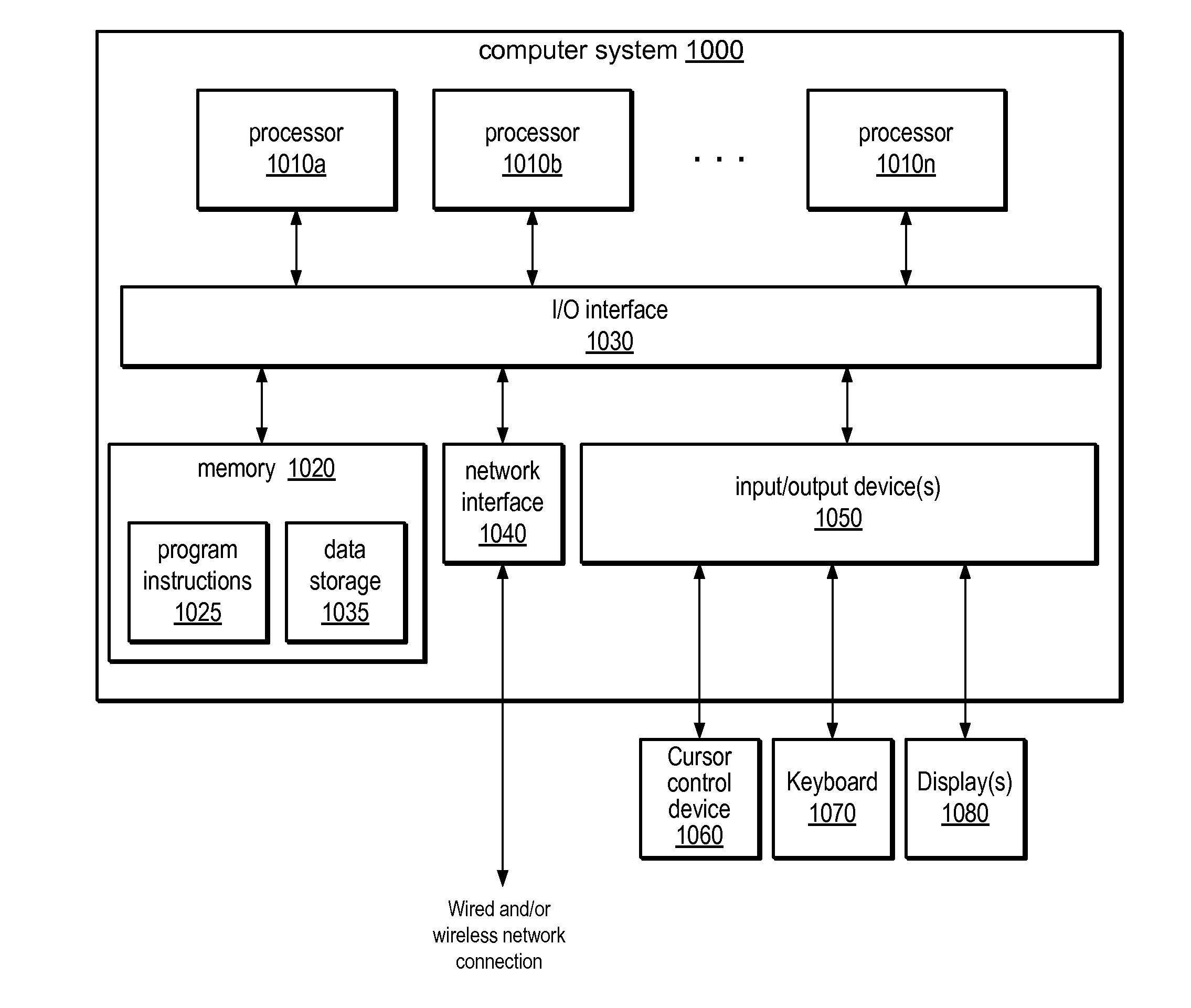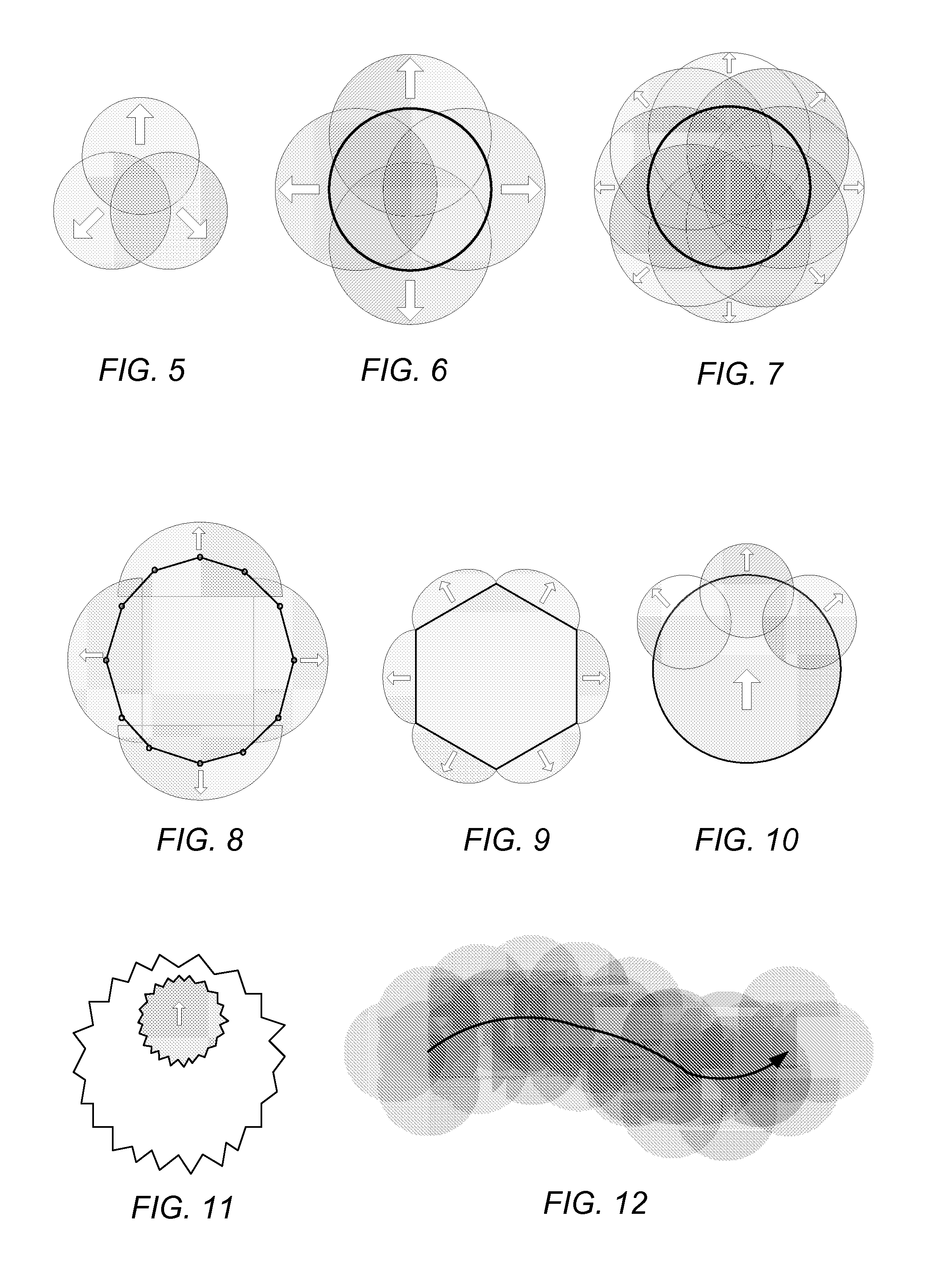Methods and Apparatus for Simulation Of Fluid Motion Using Procedural Shape Growth
a technology of fluid motion and shape growth, applied in the field of methods and apparatus for simulation of fluid motion using procedural shape growth, can solve the problems of increasing processing complexity, still involving considerable computation, and thus time, and achieve the effect of less processing power and faster rendering of frames
- Summary
- Abstract
- Description
- Claims
- Application Information
AI Technical Summary
Benefits of technology
Problems solved by technology
Method used
Image
Examples
example implementations
[0109]FIG. 27 illustrates a fluid motion simulation module that may implement embodiments of the vector-based, fluid motion simulation techniques illustrated in FIGS. 1 through 26. Module 920 may include an applicator submodule 926 that provides a painting technique and that employs a user interface 924 similar to the example user interface illustrated in FIGS. 21 and 22A-22C to deposit polygons to a canvas 910. Module 920 may also include a growth and blending submodule 928 that implements a fluid motion simulation technique that grows and blends deposited polygons as illustrated in FIGS. 24 through 26. FIG. 28 illustrates an example computer system on which embodiments of module 920 may be implemented. Module 920 may receive as input a digital canvas 910. While FIG. 27 shows the digital canvas 910 as blank, the canvas 910 may be a digital image or photograph, and may be an image that was previously created with module 920. Applicator submodule 926 may receive user input 912, for e...
PUM
 Login to View More
Login to View More Abstract
Description
Claims
Application Information
 Login to View More
Login to View More - R&D
- Intellectual Property
- Life Sciences
- Materials
- Tech Scout
- Unparalleled Data Quality
- Higher Quality Content
- 60% Fewer Hallucinations
Browse by: Latest US Patents, China's latest patents, Technical Efficacy Thesaurus, Application Domain, Technology Topic, Popular Technical Reports.
© 2025 PatSnap. All rights reserved.Legal|Privacy policy|Modern Slavery Act Transparency Statement|Sitemap|About US| Contact US: help@patsnap.com



